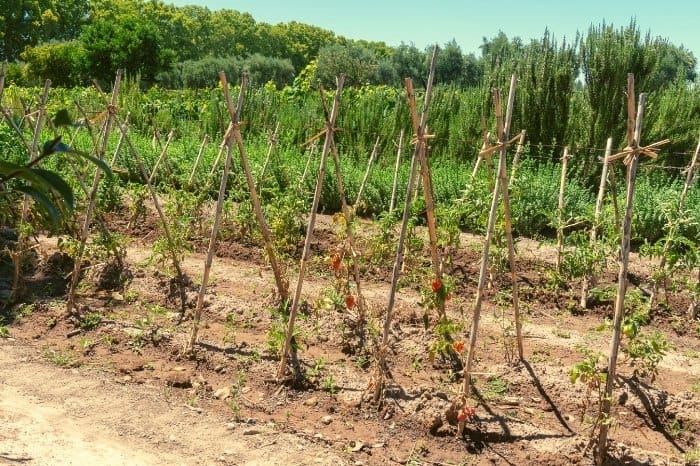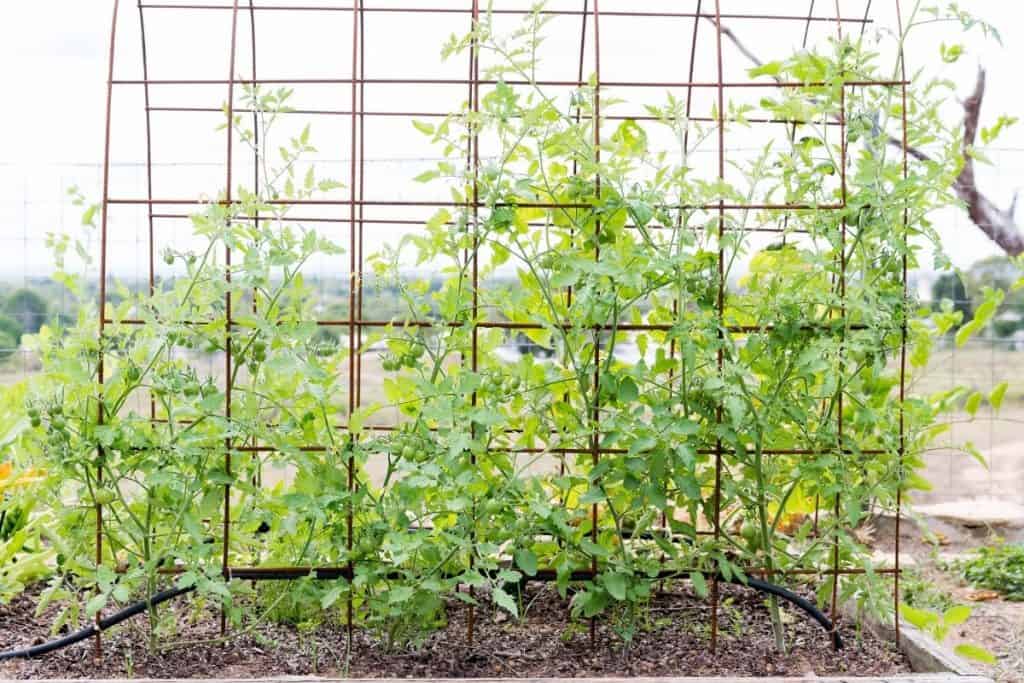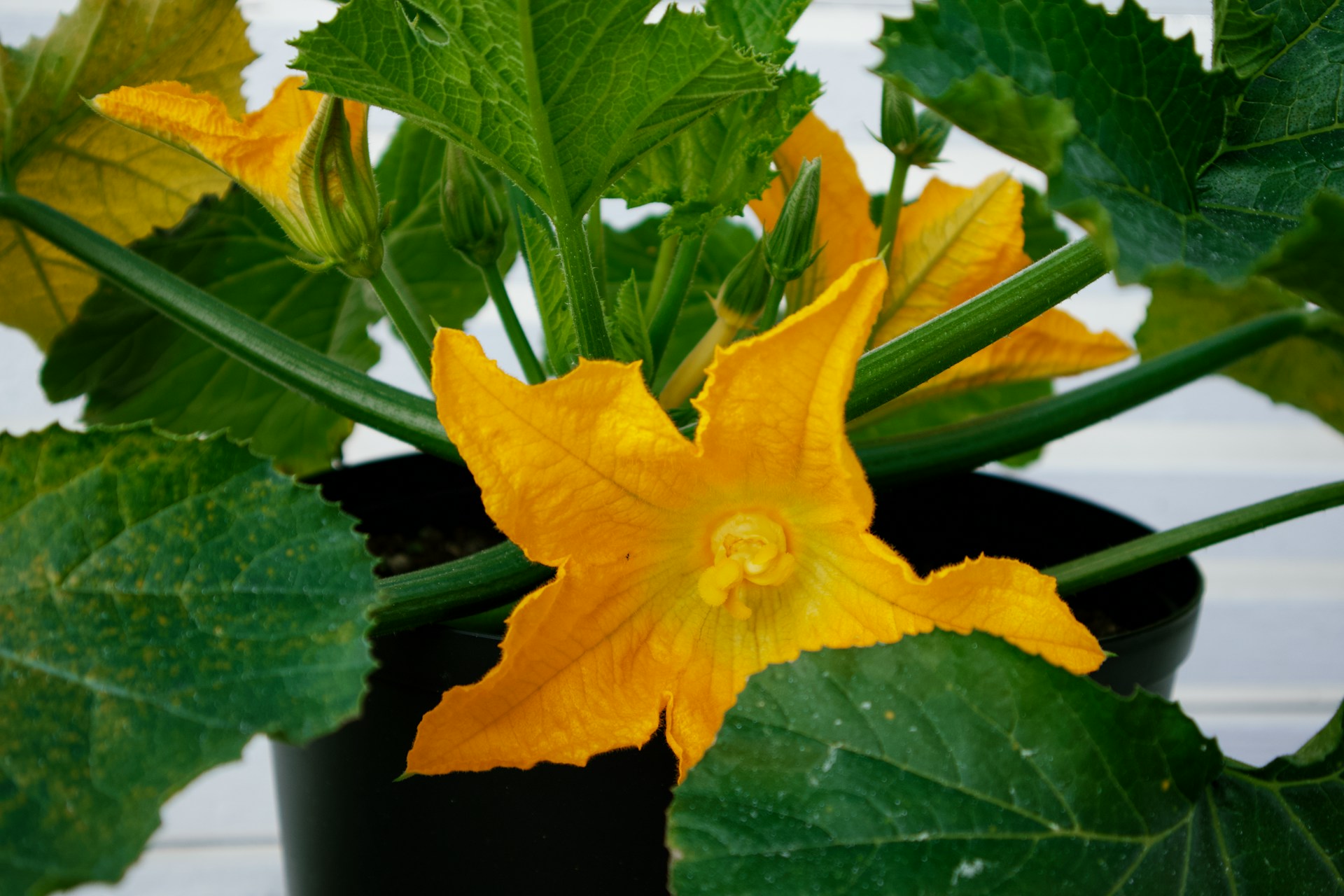Growing zucchini can be a rewarding experience, especially when space is limited. I love growing zucchini because it is easy to grow, and once it starts producing, it continues for quite some time. However, if you’ve grown zucchini, you know they sprawl quite quickly across your garden, often covering other plants with their big leaves.
One effective way to maximize your garden space is using a zucchini trellis. Vertical gardening with a trellis allows you to grow healthy, productive zucchini plants without sprawling across your garden bed. In this article, we’ll explore the benefits of increasing zucchini vertically, how to set up a trellis, and some tips for a successful harvest.
Why Grow Zucchini Vertically?
Zucchini plants are known for their large leaves and long vines. They tend to take up a lot of ground space if grown without support. But growing using a zucchini trellis can solve this problem. Here are some of the top reasons to consider vertical gardening for your zucchini:
- Space-saving: If you have a small garden or raised bed, a zucchini trellis can help free up valuable ground space for other plants.
- Better air circulation: Growing vertically allows your zucchini plants to get better airflow, which helps reduce the risk of fungal diseases like powdery mildew.
- Easier harvesting: With the zucchini off the ground, it’s easier to spot and pick the fruit at the right time.
- Pest prevention: Keeping the fruit off the
soil reduces its exposure to pests like slugs and snails.
Choosing the Right Zucchini Variety for a Zucchini Trellis
Before you begin, choosing the right type of zucchini is important. While most zucchini plants can be grown vertically, some varieties are more suited for this method than others. The best varieties for a zucchini trellis are vining or climbing types.
- Climbing Zucchini: Varieties like Raven and Black Beauty produce long vines that naturally climb support.
- Bush Zucchini: While bush types can still benefit from some support, they are more compact and may not perform as well on a trellis.
Opting for vining varieties will make trellising easier, as these plants are naturally inclined to climb up your zucchini trellis.
Here are some examples of vining or semi-vining zucchini:
- Tromboncino Zucchini (also called Zuchetta): This is a popular climbing variety. It grows long, trailing vines and produces light-green, curved fruits. While it’s technically a type of summer squash, it’s often used like zucchini. It’s great for growing on a trellis because it can climb easily.
- Rampicante Zucchini: Similar to Tromboncino, this heirloom variety also produces long vines and is perfect for vertical gardening. It produces slender, elongated fruits and is known for its climbing ability.
25 Seeds - Rare Vining Zucchini Variety, Easy-to-Grow, Heirloom, Non-GMO Vegetable Seeds for Plan...
These varieties are more suited for trellising compared to standard bush-type zucchinis like ‘Black Beauty’ or ‘Cocozelle,’ which tend to stay more compact and don’t naturally vine.
How to Set Up a Zucchini Trellis
Now that you’ve selected your zucchini variety, it’s time to set up your zucchini trellis. A strong and sturdy trellis is essential, as zucchini vines can become quite heavy as they grow and bear fruit. Here’s a step-by-step guide:
1. Choose the Right Location
Zucchini plants thrive in full sun, so choose a location that gets at least 6 to 8 hours of direct sunlight daily. Ensure the
2. Select the Right Trellis
When selecting a zucchini trellis, opt for a design that can handle the weight of the plants. Some good options include:
- A-frame trellis: This type of trellis forms a tent-like shape and provides a sturdy base for your zucchini plants to climb.

- Cattle panel trellis: This is a more robust option, typically used for larger gardens. It can easily support heavy vines and multiple plants.

- Garden netting: If you’re looking for a simpler and more affordable option, garden netting strung between two stakes can also work well.

Your zucchini trellis should be 4 to 6 feet tall, as zucchini vines can grow long and spread wide as well.
3. Install the Trellis
Once you’ve chosen your zucchini trellis type, install it in your garden bed before planting your zucchini. Place the trellis in the ground, ensuring it is secure and won’t tip over under the weight of the growing plants.
If using stakes, drive them deep into the ground, about 12 to 18 inches. Ensure the structure is stable before attaching any netting or wire for the zucchini to climb.
4. Planting Your Zucchini
Plant your zucchini seeds or seedlings at the base of the trellis, spacing them about 2 to 3 feet apart. As the plants grow, gently guide the vines toward the trellis. You can use soft plant ties to secure the vines to the structure. Avoid tying them too tightly, as this can damage the plant.
Caring for Your Zucchini Plants
Once your zucchini plants are growing up your new zucchini trellis, there are a few important care tips to keep in mind:
1. Watering
Zucchini plants need consistent moisture to thrive. Water at the base of the plants in the morning, avoiding overhead watering to prevent fungal diseases. A good rule of thumb is providing about 1 inch of water per week, which can vary depending on your climate and
2. Fertilizing
Zucchini are heavy feeders. To encourage healthy growth and abundant fruit, apply a balanced fertilizer every 2-4 weeks. Look for a fertilizer that contains equal parts nitrogen, phosphorus, and potassium.
3. Pruning
As your zucchini vines grow, it’s helpful to prune some of the lower leaves to improve airflow and sunlight penetration. This also reduces the risk of pests and diseases. Remove any damaged or yellowing leaves and excess foliage that may block sunlight from reaching the developing fruit.
Common Problems with Zucchini and How to Fix Them
Even with a zucchini trellis, you might face some challenges during the growing season. Here are a few common issues and how to address them:
- Powdery mildew: This fungal disease appears as white powdery spots on the leaves. To prevent it, ensure good air circulation by spacing plants properly and avoiding overhead watering. If powdery mildew does appear, remove affected leaves and treat with an organic fungicide.
- Blossom end rot: Caused by calcium deficiency, blossom end rot affects the developing fruit. Make sure to keep the soil consistently moist and add calcium-rich amendments if needed.
- Squash bugs: These pests can damage your zucchini plants by sucking sap from the leaves. Hand-pick any bugs you see, and use insecticidal soap to keep them under control.
Harvesting Your Zucchini
Zucchini is best harvested when it is 6 to 8 inches long. At this size, it is tender and flavorful. Because zucchini grows vertically, it’s easy to spot and pick the fruit at the right time.
Check your plants daily, as zucchini can grow rapidly. Harvesting regularly encourages the plant to produce more fruit throughout the growing season.
Conclusion
Growing vertically on a zucchini trellis is a great way to save space, improve plant health, and make harvesting easier. With the correct trellis setup and proper care, you’ll be rewarded with a bountiful zucchini harvest all season. Whether you’re working with a small garden or want to keep your plants organized, a zucchini trellis is the perfect solution for vertical gardening.
Happy gardening!
FAQ: Growing Zucchini Vertically Using a Trellis
1. Why should I grow zucchini vertically?
Growing zucchini vertically saves space, improves airflow, and makes harvesting easier.
2. What kind of trellis should I use for zucchini?
Use a sturdy trellis like an A-frame or cattle panel, at least 4-6 feet tall, to support zucchini vines.
3. Can all zucchini varieties be grown on a trellis?
Vining varieties are ideal for trellising, while bush types may need more support.
4. How do I train zucchini to climb the trellis?
Gently tie the vines to the trellis with soft ties as they grow.
5. How often should I water trellised zucchini?
Water regularly at the base, about 1 inch per week, avoiding overhead watering.

Brian is an avid gardener who loves spending time outdoors. He is passionate about using his green thumb to create beautiful, lush gardens for her friends and family. He finds joy in tending to her garden, trimming plants, and cultivating new species. He enjoys to share his knowledge and experience with others with a similar gardening enthusiasm. Brian is a true nature enthusiast and a has true passion for the outdoors.






